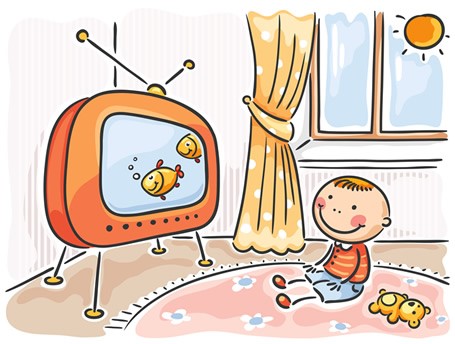MOPIGRASFIT “MOTION PICTURE GRAMMATICAL RATING SYSTEM FOR INFANTS AND TODDLERS” PROJECT
In this project we are interested in understanding how simple film and TV techniques are understood by babies and how this relates to their cognitive development and media exposure. In summary, what do babies’ little eyes see on TV?
 |
Most babies are exposed to some form of TV during their average day. Despite this, there are no guidelines for how TV programs should be designed to be most suitable for children under the age of 3 years. Current motion picture rating systems in Europe only target viewers above 3 years, and only in terms of content. Infant-directed videos include a wide range of cinematic techniques which require film literacy to understand. It is therefore crucial to investigate comprehensively the role of such techniques on infant attention so as to ascertain the impact videos may have on the developing brain. |
The aim of the MOPIGRASFIT Project is to assess systematically the role of: (a) cinematic techniques, (b) viewing experience and (c) cognitive development on the comprehension of moving images and, on the basis of the findings, (d) to suggest an "age-appropriateness" rating scheme for infants and toddlers (e.g. 12m+, 24m+) for audiovisual material.
To this aim, we test 12 and 18 month of age babies. We thank the babies and their parents who have already participated in our study. If you are interested in taking part of the study, please read the information below and contact us.
Dr Sermin Ildirar-Kirbas
s.ildirarkirbas@bbk.ac.uk
Dr Tim J. Smith
tj.smith@bbk.ac.uk
Participating in the Project
What Happens During Testing? You will be with your baby all the time. Your baby will be presented a series of child friendly scenes depicting animated or real characters performing simple actions such as putting balls into a basket or clapping. The scenes will be presented as a video on a computer screen. While she/he is watching the scenes, her/his eye movements will be recorded using a camera-system called an “eyetracker”. This device is based around a digital video camera and will not cause you or your baby any discomfort.
How Do I Get There? We are housed in the Henry Wellcome Building in Bloomsbury London. You can come via public transport, taxi, uber or your own car and we will refund your travel expenses up to £40.
If on foot We are within walking distance from the following stations: Russell Square, Goodge Street, Euston, Euston Square, Warren Street and Kings Cross.
If driving Many of the streets in this area are one-way, and there is no access to either Malet Street or Torrington Square from their north ends. You must make your way to Keppel Street to get into Malet Street. From Malet Street turn right through the University of London gates, then left into Torrington Square (drive down the slope). Park anywhere on Torrington Square and when you arrive at the Babylab we will provide you with a temporary parking permit.
If arriving by taxi Please ask the driver to bring you to Woburn Square, West side, and drop you off at the end of the street. Walk up the slope at the top right-hand corner of the square. The Henry Wellcome Building is a new building on the right.
If you have any problems, phone us on 020 7631 6258
Publications
We are very happy to announce that our chapter “How Infants Perceive Animated Films in book "Emotion in Animated Films" is about to be published!
Ildirar-Kirbas, S. and Smith, T. J. (2018) Testing the developmental foundations of cinematic continuity. In: ICIS 2018 – Building Bridges, 30th June-3rd July, Philadelphia, USA.
Ildirar-Kirbas, S. and Smith, T. J. (2018) Infants’ Anticipation of Others’ Action in Edited Film Sequences. In: ETF Multi Disciplinary Developmental Dynamics, 3-6 June 2018, Norwich, UK.
Ildirar-Kirbas, S. & Smith T. J. Action Prediction Across Match-on-Action Cuts in Infancy. SCSMI Conference, Helsinki, June 11–14 2017.
Ildirar, S., Karmiloff Smith, A. K. S., & Smith T. J. What are the developmental foundations of film cognition? SCSMI Conference, London, June 17-20, 2015
